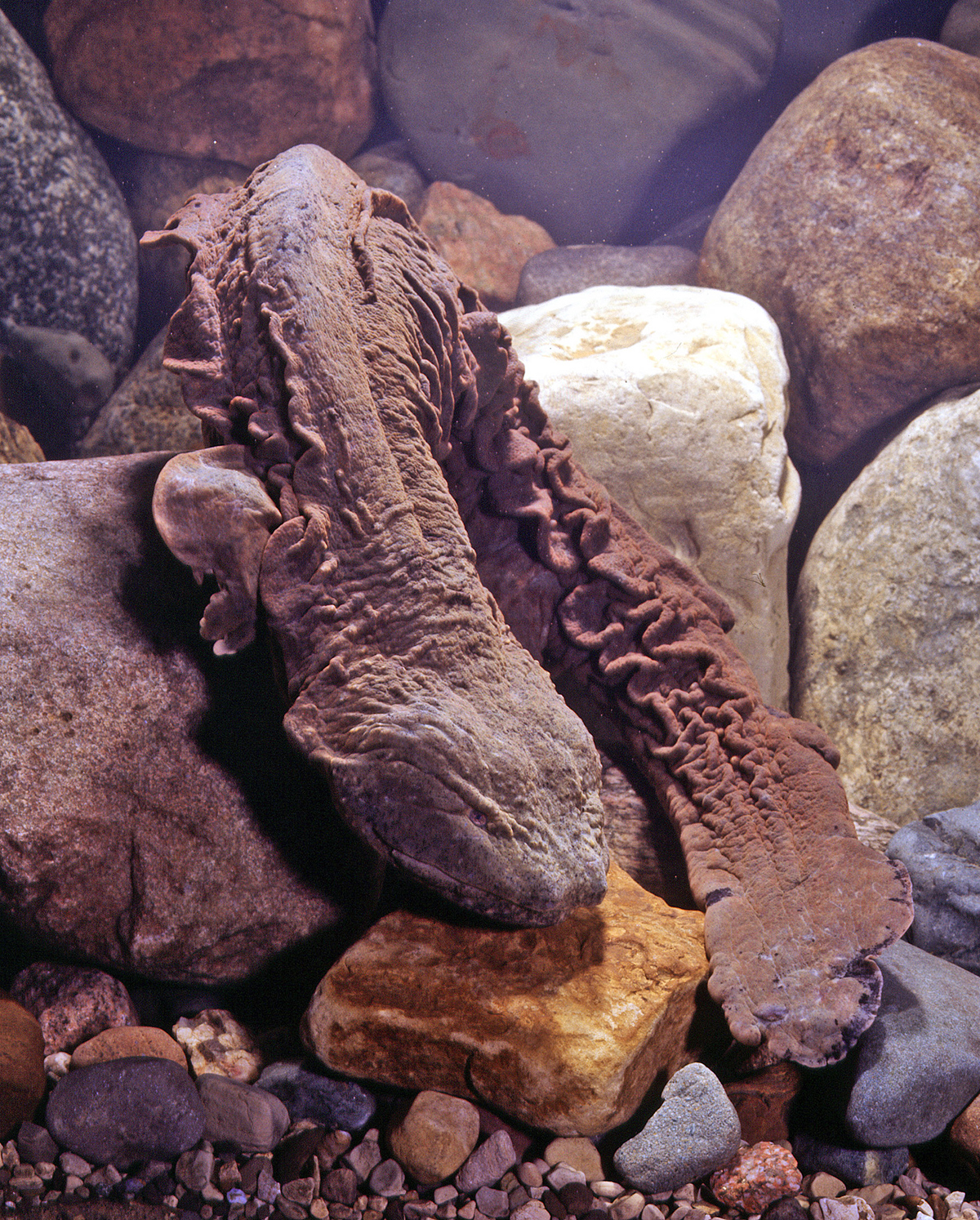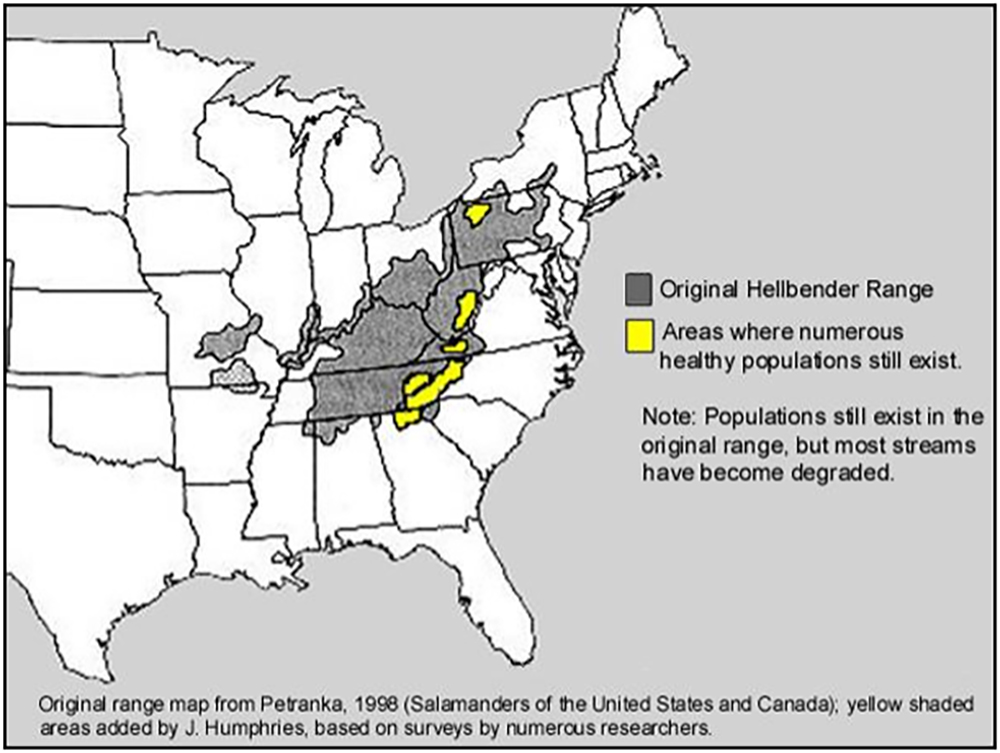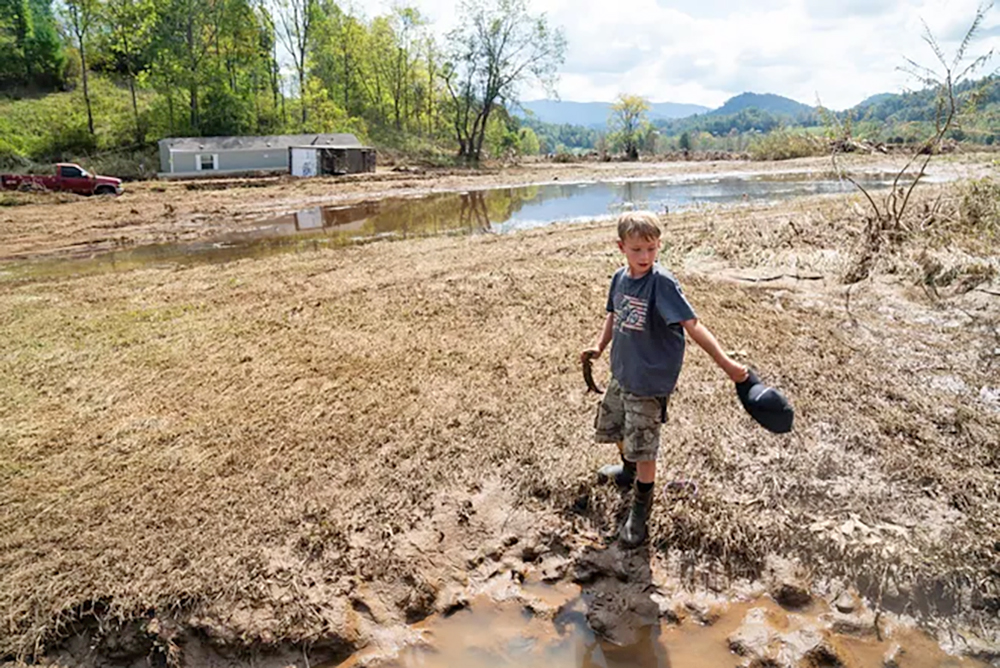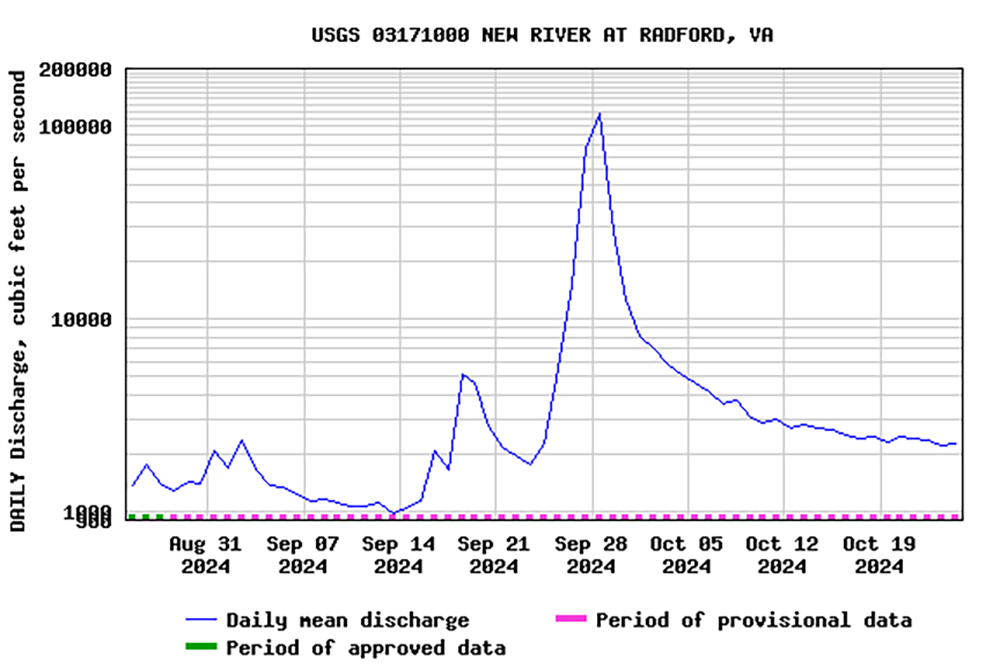ELAINE HALL
Assistant Resource Manager

Metro Parks staff recently attended an annual update about eastern hellbender conservation. As an endangered species in Ohio and having the small potential to pop up in a few of our park’s waterways, we try to stay up to date on their conservation status, the latest research, and best husbandry practices.
In 2017 eastern hellbenders were reintroduced to Big Darby Creek and Metro Parks received an animal ambassador for the species, who lives at the Battelle Darby Creek Nature Center and whom you can visit!

The reintroduction of this species to Big Darby Creek is a result of a partnership between Metro Parks, the Ohio Hellbender Partnership, Ohio Division of Wildlife, The Ohio State University, the Columbus Zoo and the Omaha Zoo. Previously the last recorded eastern hellbender in Big Darby Creek dates from 1936.
Eastern Hellbenders once ranged throughout 23 counties in Ohio, mostly in the southern and eastern portions of the state in the Ohio River drainage basin. Since 1989, hellbenders have only been recorded in seven Ohio counties. From 1985 to 2009, surveys revealed that the statewide hellbender population declined by 82 percent. Similar declines have been noted throughout their range.
While the hellbender’s range is considered to be the center of the Allegheny Mountains, their range extends from northern Mississippi and Georgia, northward through the Allegheny Mountains and plateau to southern New York. Isolated populations outside of the Allegheny mountains were able to hang on in the most pristine streams, and today are trying to be brought back through programs like the Ohio Hellbender Partnership.

The Last Stronghold and Hurricane Helene
Hurricane Helene has brought catastrophic loss to western North Carolina. Hellbender researchers in the area are facing the devastating impacts of Helene flooding. From an ecological standpoint, this area received an unfathomable amount of water. Monitoring gauges jumped from average flow rates of 2,000 cubic feet/second to 100,000 cubic feet/second — a staggering 5,000% more water. For perspective, that flow rate exceeded 1.2 million gallons per second, which surpasses the 700,000 gallons per second of Niagara Falls.
That much water moving through what is described as the last stronghold for hellbenders, and the “biggest and best watershed area for hellbenders in their entire range,” has many impacts on the species. First and most obviously is direct mortality. The North Carolina herpetologists said that they had multiple reports of mortality and displaced hellbenders, including dead hellbenders in debris piles (one with more than 100 carcasses), with hellbenders washed up in fields and on roads, and even hellbenders found in flooded basements. It is likely that some populations in these waterways have been completely wiped out. This much loss has long term impacts on the population’s ability to bounce back and survive as a species.

Secondly their habitat has completely changed in this area. Hellbenders require large flat rocks as shelter and nesting grounds. The flooding has completely scoured stream bottoms of these types of structures, flushing them out of the system. Other long-term effects include increased sediment and pollution brought into the rivers from a greater land area.
A call for Eastern Hellbender conservation
At the meeting an update was given from the US Fish and Wildlife Service on the Species Status Assessment to be added to the Lists of Endangered and Threatened Wildlife and Plants under the Endangered Species Act of 1973, as amended. On December 5, 2024 the decision to designate eastern hellbenders as endangered, threatened, or no status warranted, will be based on data gathered from the previous five years (2019-2023). This data does not include the effects of Helene on eastern hellbender populations. With any governmental decision there will be a public comment period of 90-days after their designation. Visit the USFWS eastern hellbender species page at https://www.fws.gov/species/eastern-hellbender-cryptobranchus-alleganiensis-alleganiensis to stay up to date on their status.



Never seen one but always keep a look out while dip netting